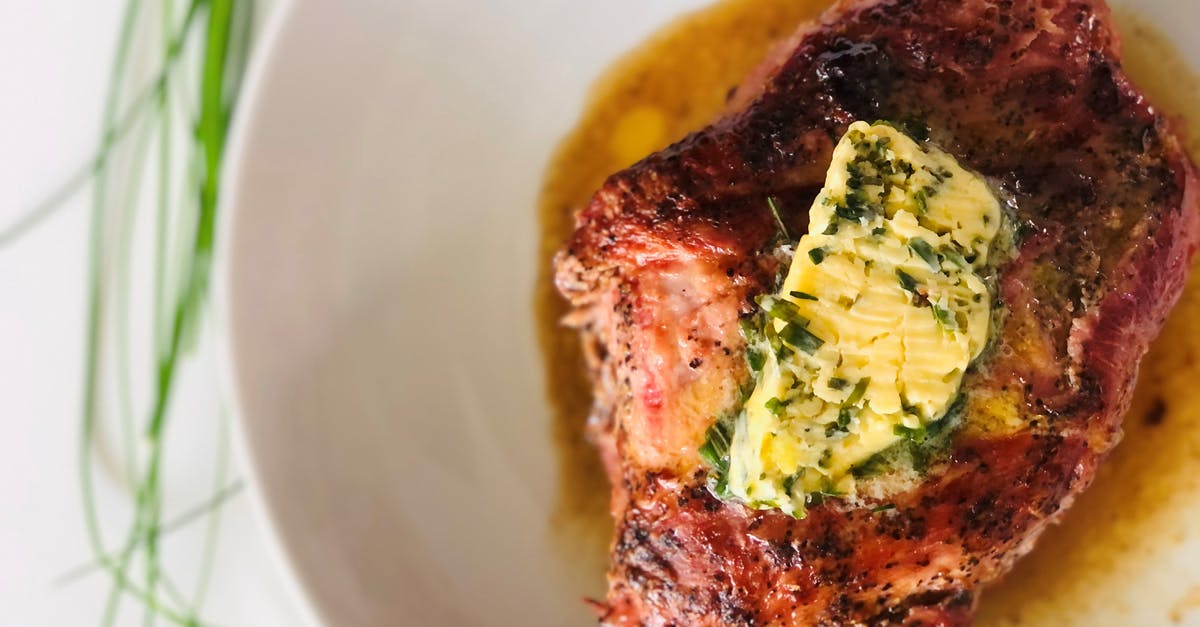Is butter ever the same after having been melted?

I was recently doing some experiments with butter which involved melting it gently in the microwave and pouring it into dishes. It seemed to me that after the butter had cooled and re-solidified, it wasn't really the same. The color was yellower, and the texture somewhat grainy.
Obviously if I microwave the butter a lot, the water will boil off. But I microwaved on low power, stirring frequently, hoping to minimize water loss.
Is there some change that happens to butter when it's melted and then cooled? Or am I imagining things?
Best Answer
Butter may look totally amorphous, but there's actually a fair amount of structure in the fat, in particular fat crystals that make it firmer. Melting it disrupts all that structure, and it can't regain it just by resolidifying, so the structure of previously melted butter really is different.
You might notice that this is similar to chocolate: if you take smooth, snappy tempered chocolate, melt it, and let it resolidify, the texture will often be grainy, soft, or even crumbly. That's also thanks to fat crystals, in that case in the cocoa butter.
To back up a bit, let's look at how butter is made. Churning is the most well-known step, but there's more:
Aging (heating, cooling, and storing the cream). The cream is heated and cooled, with resting periods at various temperatures, which encourages formation of certain kinds of fat crystals. (The details of this process vary; for example different temperatures can be used depending on the hardness of the milkfat.)
Churning. This damages the fat globules, causing them to release fat, which forms much of the mass of the butter and lets it collect into grains.
Working/kneading. After draining off the buttermilk, the grains are kneaded together. This evens out small amounts of buttermilk trapped in the grains, and fat crystals can also come together into larger networks.
So the final butter actually has three forms of fat in it: fat crystals, free fat, and fat globules. The fat crystals make it firmer, and the free fat and globules make it softer. This also explains why butter isn't all the same texture. For example, from On Food and Cooking:
Feeds rich in polyunsaturated fats, especially fresh pasturage, produce softer butters; hay and grain harder ones. The butter maker also influences consistency by the rate and degree of cooling to which he subjects the cream during the aging period, and by how extensively he works the new butter. These conditions control the relative proportions of firming crystalline fat and softening globular and free fat.
So when you melt and resolidify butter, it's not just a simple solid to liquid to solid thing. You're disrupting the crystals, and potentially even rupturing a few more fat globules. That means a couple things:
There's likely more free fat and less crystals, which explains why previously melted butter can be much softer than the original butter.
The crystals that do remain or reform won't have the same structure as the original ones, since you didn't follow the same heating/cooling/storing regimen. That explains the graininess you noticed. It's possible that working/kneading the butter might even that back out to some extent.
The exact texture of your previously melted butter will probably vary, depending on how hot you melted it and how fast you cooled it afterwards.
Pictures about "Is butter ever the same after having been melted?"



Quick Answer about "Is butter ever the same after having been melted?"
Butter may look totally amorphous, but there's actually a fair amount of structure in the fat, in particular fat crystals that make it firmer. Melting it disrupts all that structure, and it can't regain it just by resolidifying, so the structure of previously melted butter really is different.Does butter go back to normal after melting?
Bring melted butter back to solid form! Revive over-softened butter by giving it an ice bath. Place the butter in a small bowl, and place the small bowl in a larger one filled with a few handfuls of ice and some cold water.Does butter stay the same weight when melted?
A very small amount of weight might be lost when you melt the butter (especially if you melt it at a pretty high temperature) because a little water will evaporate as the butter melts, but this should not have a measurable impact on the finished recipe.Does melted butter make a difference?
Because melted butter has already released much of its water content, it makes the finished treats soft and dense, as well as flavourful. Use it in loaves and brownies. Use it in: loaves and brownies.Is a cup of melted butter the same as solid butter?
Melted vs. Solid butter is mixed with air, so the volume of solid butter will not be the same when it's melted. If the recipe calls for "1/4 cup of melted butter," you must melt the butter first.Melted butter 😭😭 Why it happens and what to do
More answers regarding is butter ever the same after having been melted?
Answer 2
Part of making butter is churning... the churning process introduces a ton of air into the butter. When you melt it, all of the air is released so you should never expect melted butter to return to the same state it was before it was melted.
The air trapped in butter is what causes the lighter color you see... if you take softened butter and whip it (as the first step in baking cookies, for example), the butter will get even lighter in color.
The same thing happens with ice cream when it is melted... churning introduces air and melting releases that air... which is why you can't refreeze ice cream that has melted.
Answer 3
There is indeed a physical change that occurs.
If you think back to grade school science you probably remember learning about solutions and suspensions, and how the former is a mixture that stays mixed when left alone (like saltwater) and the latter is a insoluble particles dispersed in a liquid, which separate if left alone (like water and sand if you shake them up together)
Solid butter is what's called a colloidal suspension, which is basically a cross between the two. It's a suspension in a solidified state where it stays uniformly mixed. When butter is heated to the point of liquefying, the fat and protein components separate because of their different densities. Once they've come apart they're going to remain that way when the butter cools.
Attempting to mix the layers back together during cooling would bring it slightly closer to how it was at first, but it would still be impossible to mix the fat and nonfat as uniformly as it was to begin with.
Sources: Stack Exchange - This article follows the attribution requirements of Stack Exchange and is licensed under CC BY-SA 3.0.
Images: Any Lane, Ron Lach, Quang Nguyen Vinh, Mi Butter SA
